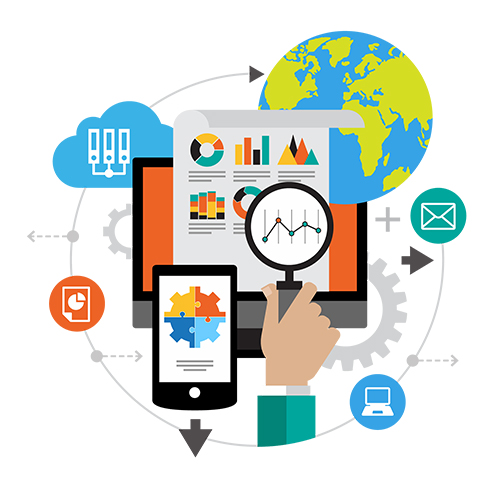 Erp for wholesale distribution
Erp for wholesale distribution
Programming & Tech
Erp for wholesale distribution development
Product Info
An ERP system for wholesale distribution is a software solution designed to streamline and optimize the operations of wholesale distribution businesses. It encompasses various modules such as inventory management, purchasing, sales, order fulfillment, warehouse management, and financial management. The system integrates with external systems, automates processes, and provides real-time visibility into inventory, sales, and financial data. It aims to improve efficiency, reduce costs, enhance customer service, and enable data-driven decision-making for wholesale distribution companies.Description
-
Developing an ERP (Enterprise Resource Planning) system for wholesale distribution involves creating a comprehensive software solution that addresses the specific needs and challenges of the wholesale distribution industry. Here's a general outline of the steps involved in developing an ERP system for wholesale distribution:
-
Requirements Gathering: Start by understanding the specific requirements of wholesale distribution businesses. This involves conducting interviews with stakeholders, analyzing existing processes, and identifying pain points and inefficiencies.
-
Functional Design: Based on the requirements gathered, create a functional design for the ERP system. This includes defining modules and functionalities such as inventory management, purchasing, sales, order fulfillment, warehouse management, financial management, and reporting.
-
Technology Selection: Choose the appropriate technologies and tools to build the ERP system. Consider factors like scalability, security, integration capabilities, and ease of use. Common technologies used in ERP development include programming languages (such as Java, C#, or Python), databases (such as MySQL or PostgreSQL), and frameworks (such as Spring or .NET).
-
Database Design: Design the database schema to store and manage data efficiently. Consider factors such as data normalization, performance optimization, and data integrity. The database should accommodate various entities like products, suppliers, customers, orders, invoices, and financial transactions.
-
Development: Begin coding the ERP system according to the functional design. Start with core functionalities like inventory management, purchasing, and sales. Follow coding best practices, modularize the codebase, and consider implementing reusable components to improve maintainability and scalability.
-
Integration: Wholesale distribution businesses often interact with various external systems, such as suppliers, logistics providers, and accounting software. Integrate the ERP system with these external systems to automate data exchange and streamline processes. APIs (Application Programming Interfaces) and data integration techniques (such as file imports/exports or message queues) are typically used for integration.
-
Testing: Perform rigorous testing to ensure the ERP system functions as intended. Conduct unit tests, integration tests, and system tests to identify and resolve any bugs or issues. Consider employing automated testing tools to improve efficiency and accuracy.
-
User Interface (UI) Design: Create a user-friendly and intuitive interface for the ERP system. Focus on simplicity and ease of use, allowing users to navigate through modules and perform tasks efficiently. Incorporate responsive design principles to ensure compatibility with various devices and screen sizes.
-
Deployment: Prepare the ERP system for deployment. Set up the necessary hardware infrastructure, install required software dependencies, and configure the system for production use. Consider scalability, security, and backup strategies during deployment.
-
Training and Support: Provide training to end-users and administrators to familiarize them with the ERP system's functionalities. Offer ongoing technical support and maintenance to address any issues, release updates, and ensure the ERP system's smooth operation.
-
Continuous Improvement: Gather feedback from users and stakeholders to identify areas for improvement. Monitor system performance, collect usage data, and implement enhancements and new features based on user requirements and changing business needs.
Developing an ERP system for wholesale distribution is a complex and time-consuming endeavor. It requires a multidisciplinary team of developers, designers, database specialists, and domain experts to deliver a robust and effective solution. Consider engaging with a software development company experienced in ERP development or building an in-house development team to ensure successful execution.
-

